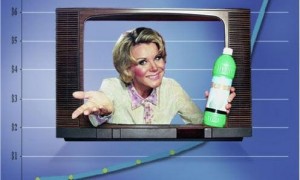The bloodletting taking place in local TV news operations around the United States is shocking. Newscasts are being cancelled, established talent fired, staffs cut. 
Frankly, a good chunk of the value proposition in local TV news died a long time ago, but the Great Recession and the demise of auto-related advertising has sped the process considerably in local television.
Now we’re going to enter a new era of content sharing, product placements and a possible reduction in the number of outlets in any given market doing “standard” newscasts.
I’m going to be writing about all of these things over time, but the hot topic today is product placements. Starbucks has reached an agreement with MSNBC’s Morning Joe program. Talent will drink Starbucks coffee. Yippee.
For years, hair, makeup and wardrobe trade outs have been part of television news. Subtle credits at the end of the show got the advertiser exposure, and the talent looking good.
Sponsorships and “brought to you by’s” in weather segments or special franchises have also been part of the mix for years.
So is product placement really any different? I think the answer is “yes” if it shapes editorial decision making – but not in the way you might think.
I remember working at a station where we were running a “meter strategy” to attract viewers in the zip codes where we knew the most meters were located. We’d take our psychographic data, our geographic data and try to meld them together into “news” stories to game the boxes. This happens all the time.
It’s not so much that we were spiking stories that hurt advertisers, as much as it was that we were concocting stories out of whole cloth to fit the research. Instead of covering local government for instance, we’d do something on wine tasting in a certain zip code and tease the living hell out of it in the right show on the right night. Why? Because the targets with the boxes ranked wine tasting high on their lists of interests, watched the lead-in we targeted, and lived in a box-rich zip code.
This is the real threat of product placement. Not so much that stories will be spiked, but rather that stories will be shaped to fit advertising needs. The result is packaging commercial speech into a journalistic wrapper. Done skillfully, it might not even be noticed. Viewers will never know what reporting staff resources weren’t spent on. And that’s the danger.









